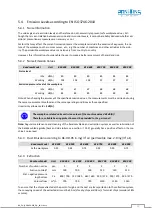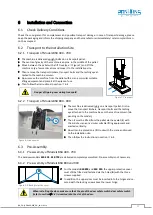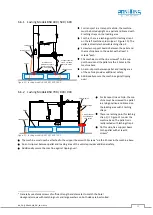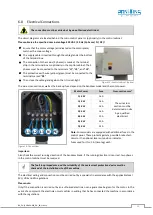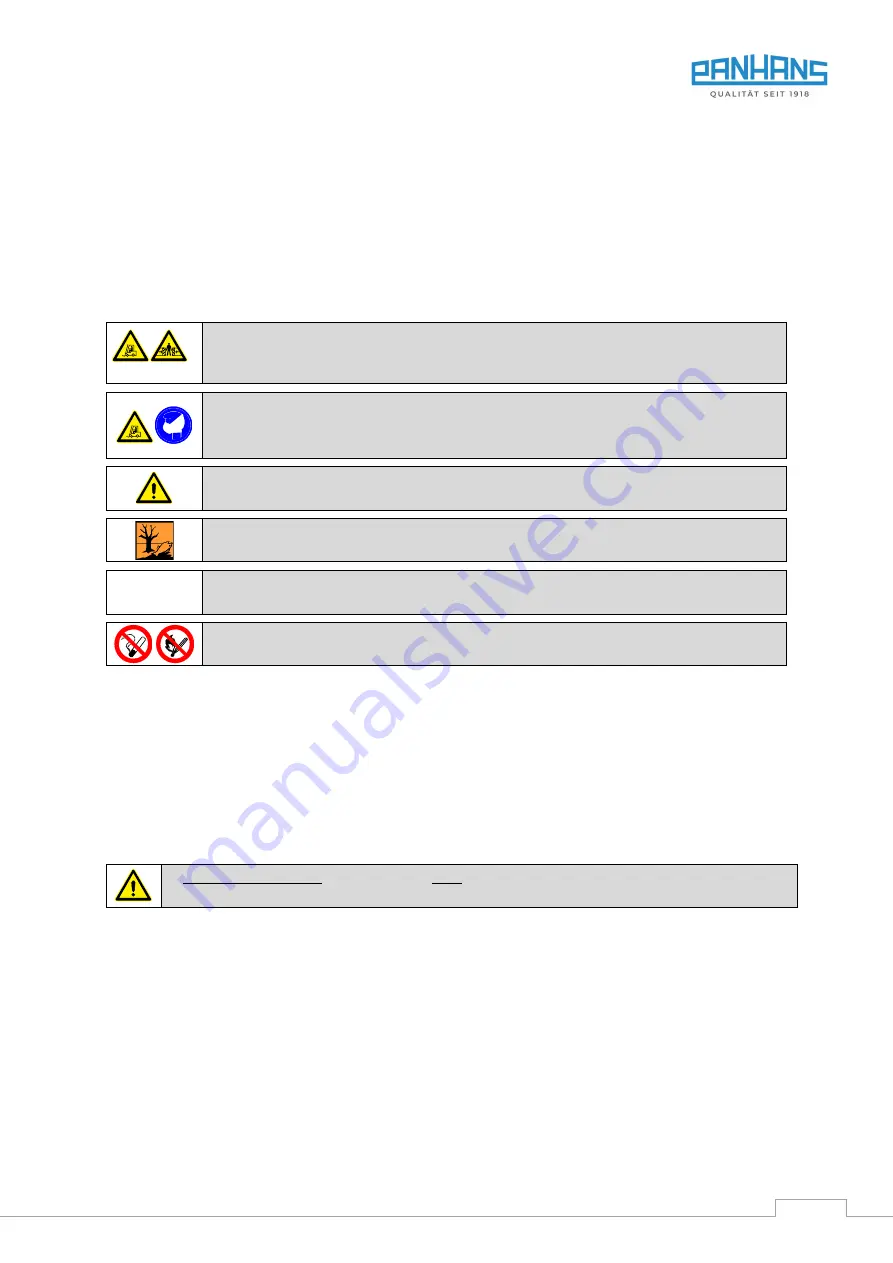
BA_PH_BSB-400-900_EN_44-21.docx
22
6.4
Installing the Machine
The machine must be placed level on the floor. To do this, level the machine with a spirit level using the 4 grub
screws in the machine base. There are four additional holes at the bottom of the machine base, which can be
used to secure the machine against tipping with screws. However, these locking screws must not be tightened,
as otherwise the machine may be damaged by vibrations occurring.
•
A foundation is not required. The floor must have a load-bearing capacity corresponding to the machine
weight (see
“Technical Specifications” in section
5.2).
•
The bare parts of the machine are greased to protect them from corrosion. Carefully degrease the parts
protected against rust with petroleum or benzine.
Be aware of possible crushing hazards when placing the machine (from the pallet to the
floor) by means of a forklift truck or overhead crane. Pay particular attention to your
hands and feet and wear safety shoes and protective gloves as a precaution.
Danger to life when using a forklift truck! Keep a sufficient distance from the forklift truck
and watch its speed. Vehicles with combustion engines also produce toxic exhaust gases.
Wear a breathing mask if necessary.
It is essential that the machine is level! Check with spirit level!
Dispose of the packaging material in an environmentally friendly way!
Do not use nitro thinner for cleaning. Painted surfaces of the machine can be damaged.
Fire hazard! Do not smoke and do not light an open fire.
6.5
Temporary Storage
If the machine is not put into operation immediately after delivery, it must be stored carefully in a protected
place. Carefully cover the entire machine so that neither dust nor moisture can penetrate. The bare, non-surface-
treated parts (e.g. the cast iron tabletop) are provided with a preservative. This must be checked regularly for
effectiveness and renewed if necessary.
6.6
Lashing on a Transport Vehicle
The responsibility for safe loading is borne by the respective shipper!
Please note the following when lashing in the transport vehicle:
•
The loading area of the transport vehicle must always be clean and dry.
•
The lashing straps used must be suitable for the total weight of the machine (see section
5.2).
•
Fastening on the loading area is done by lashing down: This means that the transport pallet is secured by
frictional locking. The load is pressed so firmly onto the loading surface that it can no longer slip. The clamp-
ing tool should have a high STF value at the frictional connection, e.g. long-lever ratchets.
•
In addition, anti-slip mats should be used to provide even more safety.
•
The ideal lashing angle (α) for tie
-down lashing is 83° to and 90°. Therefore, the lashing straps should pull
downwards approx. vertically. As the angle decreases, the pretensioning force of the lashing is reduced.
•
Observe the permissible total weight of the transport vehicle.
•
Ensure that the permissible axle loads of the transport vehicle are observed. The load must be distributed
evenly on all axles of the vehicle.
A separate lashing strap must be used for each lashing point. Every lashing point must be tensioned
individually on the loading area of the vehicle! The pallet must also be secured against slipping!













